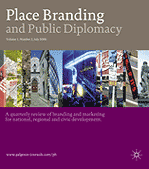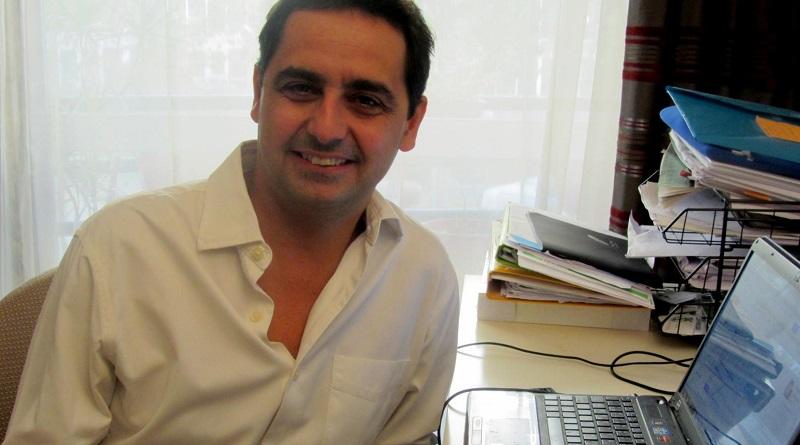Travel with us to Portugal for this interview with Joao Freire, Professor in Marketing and Director of the Masters Programme in Marketing Management at IPAM/Universidade Europeia, in Lisbon. Joao is a founding member of the recently formed International Place Branding Association.
Learn about:
- Why branding a place is so much more complex than branding a product or service;
- The top five ingredients for successful place branding;
- Where in the world do you see most interest in place branding research and practice;
- His thoughts on Brand Lisbon;
- How the brand image of Portugal changed over the last ten years;
- Trends in destination marketing;
- The main challenges – and opportunities – for country branding in Africa and the Middle East;
- The top five ingredients necessary for successful place branding.
Joao, when did you first come across the concept of place branding?
The first time was in 1999. It was a new and exciting concept that both researchers and practitioners were realizing was relevant, but there was not much research in this area. Back then, the term Place Branding wasn’t clearly defined nor universally accepted, as it is now. So it was a very exciting time and there was an entire new field to consider and investigate.
Now at the end of 2015, what has changed?
Place Branding is now a much more mature concept and built on solid research evidence. Also, we now have several case studies, which allow us to better understand the concept and its application.
What has really changed for me is the realization that branding a place is so much more complex than branding a product or service because of political interference and the quantity of stakeholders involved in the process.
Place branding can be very complex and researchers or practitioners need to take this into account when starting a project focused on the branding of cities, regions or destinations. Implementation of place brand strategy is highly dependent on a supportive brand management structure.
Your key insights from co-authoring the Place Marketing Manifesto in April?
The writing of the Place Marketing Manifesto was an interesting period of time that involved many discussions and a lot of reflection with my colleagues. At the end we confirmed that we were working within a field that has its own specifications and, therefore, can and should be considered a professional and academic discipline in its own right.
Sometimes, there is a misunderstanding regarding the process of branding places and the need for its own specific methodologies. Quite often we see organizations charged with branding places applying the same methodologies and train of thought developed for the branding of products or services. Of course that is a dangerous path and the impact might be negative for the places that make the investment.
The manifesto is crucial in raising awareness about the special characteristics of place branding, and that branding a place is not the same as branding a product or service.
Where in the world do you see most interest in place branding research and practice?
Europe. It is hard to say why. But when you look at university research programs, for example, a large majority is Europe based. This might be because there’s more competition in Europe and therefore there is more of a need.
Your key insights as regional editor Europe, Middle East and Africa for Place Branding and Public Diplomacy?
 In my opinion, the Place Branding and Public Diplomacy journal has been a relevant engine for the development of the place branding concept. Simon Anholt was one of the first to realize the relevance of this concept and how important it would be to have a journal dedicated just to this theme.
In my opinion, the Place Branding and Public Diplomacy journal has been a relevant engine for the development of the place branding concept. Simon Anholt was one of the first to realize the relevance of this concept and how important it would be to have a journal dedicated just to this theme.
This journal, which is based in the UK, might be one of the reasons why the concept of Place Branding is so much more discussed in Europe today than in other parts of the world.
Robert Govers and Nicholas Cull have been doing a great job pushing the discipline. Robert is especially active having developed with Simon the Good Country ranking, which makes us all reflect about the relevance of the Place Branding discipline in today’s world.
Your thoughts on Brand Lisbon?
Although I don’t have any formal study showing this, anecdotal evidence indicates that the image of Lisbon has been changing in the last few years. The branding effort started in the 90’s, which had two important dates. Lisbon in 1992 was selected as the European Capital of Culture and in 1998 was selected to host to the World Exhibition.
These events were important not only for awareness but also because they led to important investments in infrastructure, which helped make Lisbon an attractive place to visit and to live. The city itself and its marketing team have been doing a great job and have been able to build an interesting offer.
Does city branding as practice play a role in Portugal?
Some cities are using the concept quite effectively. Porto, for example, is doing a great job in using its available resources intelligently, guided by clear objectives and strategies about what they want to do. They are involving all relevant city stakeholders, including their main cultural agents, and have an ambitious urban regeneration program.
I think there is a new way of thinking in Portugal. Before the Economic Crisis there was plenty of money available for cities. Mayors used the available resources for logos and events, often with a dubious return on investment.
With the crisis, these resources dried up and the lack of results started to show. Now mayors are more aware about where to invest and I think it forced them to think more strategically about the place they are managing.
How has the brand image of Portugal changed over the last ten years?
Even though the country went bankrupt and was grouped together with other countries in a club called PIGS, ironically I think the attractiveness of Portugal has improved. In terms of tourism visitors, the number is going up and so have the sales of second houses to foreigners. The number of Erasmus students is also at its highest level ever. That makes me think that Portugal’s reputation is improving and people are willing to invest in Portugal.
Which trends do you observe in destination marketing, for example Portugal?
It is becoming smarter, more efficient and less dependent on public money and more focused on the private sector. The budgets allocated for advertising are being reduced since there is less public money available.
People in charge of places have come to realize how relevant the private sector is in the destination marketing process; there’s less money to spend so they have to increase efficiency.
 Where do you see the main challenges – and opportunities – for country branding in Africa and the Middle East?
Where do you see the main challenges – and opportunities – for country branding in Africa and the Middle East?
I edited two special issues for Place Branding and Public Diplomacy, one on place branding in Africa and the other on place branding in the Middle East.
To be honest I was surprised by the lack of contributions. I talked with researchers from universities in Africa and realized that the conditions they face are very different from other places.
Universities in Africa face chronic dis-investment, which makes it harder for researchers to attend a conference or to have access to scientific publications.
Many African countries base their development on exports of raw material, with little need to invest in their brands to support the attraction of resources or to help the COO [country-of-origin] effect. Of course, Africa is a big continent and realities and needs differ between countries.
In the Middle East, some countries realised that they should not depend solely on exporting oil and instead diversify their economies by attracting business, tourists and workers. The way of doing that was through place branding.
Competition among some countries in the Middle East is an engine for transformation and they are taking into account place branding for their development strategy.
I think a similar situation will also happen in Africa soon, and therefore we might witness an increased interest in the discipline of place branding there.
Three books every place branding professional should read?
The last book from Keith Dinnie: Nation Branding, Concepts, Issue and Practice
I also like the book from Bill Baker, Destination Branding for Small Cities. It is very concise and straight to the point.
Another good read is: Rethinking Place Branding – Comprehensive Brand Development for Cities and Regions, edited by Mihalis Kavaratzis, Gary Warnaby and Gregory Ashworth.
Which are the top five ingredients necessary for successful place branding?
I would prefer to mention four conditions:
- A favourable political framework which allows for the development of solutions that are market efficient and not politically motivated.
- Educated managers in the area of place branding.
- Tradition of compromise among the people that represent the different organizations.
- A basic need of attracting resources and to differentiate a city or a nation from competitors.
Thank you, Joao.
Connect with Joao Freire on LinkedIn.
Enjoyed our interview with Joao Freire on place marketing and branding trends in Portugal, Africa and the Middle East? Spread the word!


